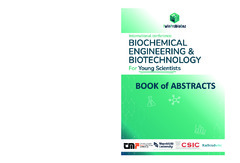Приказ основних података о документу
Possibility of biodegradation of cotton membrane containing TEMPO radical and citric acid
| dc.contributor | Bezbradica, Dejan | |
| dc.contributor | Bezbradica, Dejan | |
| dc.contributor | Simović, Milica | |
| dc.contributor | Ćorović, Marija | |
| dc.contributor | Jakovetić Tanasković, Sonja | |
| dc.contributor | Milivojević, Ana | |
| dc.creator | Knežević, Nataša | |
| dc.creator | Jovanović, Aleksandar | |
| dc.creator | Bugarčić, Mladen | |
| dc.creator | Vuksanović, Marija | |
| dc.creator | Milošević, Milena | |
| dc.creator | Pešić, Ivan | |
| dc.creator | Marinković, Aleksandar | |
| dc.date.accessioned | 2023-12-27T10:22:47Z | |
| dc.date.available | 2023-12-27T10:22:47Z | |
| dc.date.issued | 2023 | |
| dc.identifier.isbn | 978-86-7401-389-2 | |
| dc.identifier.uri | https://ritnms.itnms.ac.rs/handle/123456789/1202 | |
| dc.description.abstract | Cotton-based membranes, due to their exceptional biocompatibility and sustainability, have attracted considerable attention in various applications, especially in the field of bio and green technologies. This study investigates the biodegradation potential of cotton membranes modified with TEMPO (2,2,6,6-tetramethylpiperidine-1-oxyl) radical and citric acid (CA), with the aim of improving their properties and facilitating environmentally friendly disposal. TEMPO radicals, in conjunction with the crosslinker citric acid, are incorporated into the cellulose structure through a novel modification process. The citric acid component acted as a plasticizer, increasing the amorphous parts of the cellulose and promoting enzymatic attack. The TEMPO radical, with its nitroxyl group, contributed to the oxidation of cellulose, further facilitating biodegradation. The biodegradation aspect of these modified membranes was investigated in controlled environmental conditions (Soil Burial test), simulating natural scenarios (humidity, influence of enzymes, and bacteria). Biodegradation parameters such as weight loss, structural changes, and degradation kinetics were examined during 90 days. Characterization of the structure was performed using FTIR and SEM methods. Our findings suggest that cellulosic membranes possess complete (100%) biodegradability after 70 days compared to unmodified membranes. Obtained result shed light on the potential of membranes modified in this way as sustainable and biodegradable alternatives in various applications. The results emphasize their ecological nature and ability to reduce environmental stress. Such cellulose-based materials promise a much greener future in biotechnology, healthcare, and environmental protection. | sr |
| dc.language.iso | en | sr |
| dc.publisher | Belgrade : University of Belgrade, Faculty of Technology and Metallurgy | sr |
| dc.relation | info:eu-repo/grantAgreement/MESTD/inst-2020/200017/RS// | sr |
| dc.relation | info:eu-repo/grantAgreement/MESTD/inst-2020/200023/RS// | sr |
| dc.relation | info:eu-repo/grantAgreement/MESTD/inst-2020/200026/RS// | sr |
| dc.relation | info:eu-repo/grantAgreement/MESTD/inst-2020/200135/RS// | sr |
| dc.rights | openAccess | sr |
| dc.source | International Conference BIOCHEMICAL ENGINEERING AND BIOTECHNOLOGY FOR YOUNG SCIENTISTS | sr |
| dc.subject | cotton linters | sr |
| dc.subject | TOCell membrane | sr |
| dc.subject | Soil Burial test | sr |
| dc.subject | biodegradable polymers | sr |
| dc.subject | cellulase | sr |
| dc.title | Possibility of biodegradation of cotton membrane containing TEMPO radical and citric acid | sr |
| dc.type | conferenceObject | sr |
| dc.rights.license | ARR | sr |
| dc.identifier.fulltext | http://ritnms.itnms.ac.rs/bitstream/id/2755/bitstream_2755.pdf | |
| dc.type.version | publishedVersion | sr |

